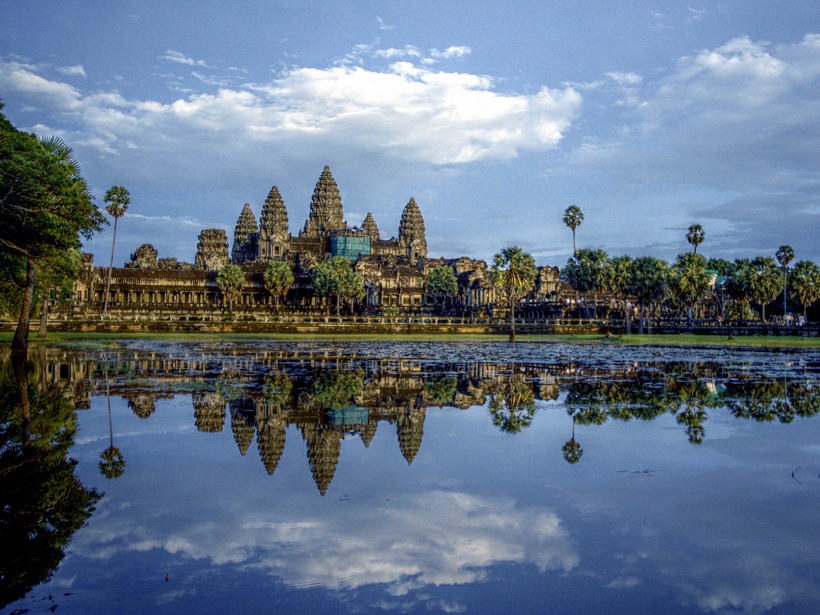Summer rains of the Asian monsoon help sustain more than half the human population and have influenced the way that societies have developed for about 70,000 years. The availability of fresh water is central to modern society, yet this supply is potentially jeopardized by changes in monsoon intensity linked to climate change.
At an American Geophysical Union (AGU) Chapman Conference in Hong Kong in June 2015, scientists from a variety of disciplines met to discuss the evolution of the Asian summer monsoon and how this might have influenced both Holocene environmental conditions and the development of human societies. Participants then explored how the monsoon is likely to change over the next century, as well as the potential societal, economic, and security implications.
For the first time, a significant number of atmospheric scientists working with the Asian monsoon interacted with scientists studying ancient environmental conditions, archaeologists, and social scientists.
This gathering represented the first time that a significant number of atmospheric scientists working with the Asian monsoon interacted with scientists studying ancient environmental conditions, archaeologists, and social scientists. It is through such cross-disciplinary interactions that scientists hope to make advances in understanding the monsoon and its effects, as well as how to mitigate negative societal impacts.
Reconstructions of monsoon strength since the Last Glacial Maximum are now becoming more detailed and producing more consistent results. Speleothem reconstructions are now supported by independent data sets, such as tree rings spanning the past approximately 1000 years, pollen records, and geochemical proxies spanning much longer periods. More recent advances include improvements in the modeling of landscape evolution and how that is linked to monsoon strength.
Participants discussed a case study concerning the impact of droughts and their relationship to the collapse of the Angkor Wat urban center during the 15th century. This study further highlighted an example of maladaption, in which an advanced civilization used engineering in an ultimately unsuccessful attempt to overcome environmental stresses.
Angkor Wat’s demise has implications for modern society as scientists weigh the value of constructing defenses against environmental threats.
Angkor Wat’s demise has implications for modern society as scientists weigh the value of constructing defenses against environmental threats such as sea level rise or greater flooding on major river systems. There is a risk of scarce resources being wasted in the construction of expensive but insufficient defenses. Meeting participants emphasized the importance of input from environmental scientists in government policy discussions so that expensive defenses are erected only where the cost-benefit is justified, for example, in places where it is appropriate to protect rather than move key elements of infrastructure, such as power stations or hospitals.
Central ideas that emerged during the meeting included the following:
- Participants recognized that paleoclimate modelers tend to focus on long time periods with weak spatial representation, whereas those modeling the modern climate generally work on short time periods with high spatial resolution. Better alignment of the approaches of these two communities (e.g., longer, time-dependent modeling) would be useful for understanding what has driven past changes in the monsoon, as well as for predicting future changes in the context of a warming planet.
- Atmospheric scientists concluded that although much progress has been made in explaining the monsoon’s behavior, our understanding of the dynamics underlying monsoon variability remains incomplete. Advances have been made in documenting the importance of aerosols and specifically their influence in reducing monsoon intensity. Predicting the impact in the context of a rapidly industrializing Asian continent is important but will critically depend on the response of regional governments to initiatives aimed at improving environmental quality.
- Paleoclimate records emphasize that the monsoon likely reached a maximum around 8000 years ago, after which it declined, partly during times of rapid climate change. Better resolution of the early Holocene climate change raises the possibility that data sets from this time might be used to test atmospheric models for future conditions. In particular, importance was placed on understanding how the monsoon might operate under conditions where the global average temperature increased by 2°C, 4°C, or even more, as predicted by the Intergovernmental Panel on Climate Change report on future climate change.
If monsoon-related scientific research is to be relevant to Asian societies and governments, then understanding the potential impact of changes over the next century must remain a key research goal. Important problems should include identifying tipping points that might have catastrophic impacts, such as shifts in the monsoon that could significantly alter the volume of water received by relatively dry but populous areas like the Yellow River valley. The meeting recommended that gatherings in which different subdisciplines can meet should become more frequent if scientists are to make useful contributions to society at large, as well as to pure scientific goals.
Acknowledgments
We thank Corliss Tsui from the Chinese University of Hong Kong (CUHK) for the organizational support. We also thank CUHK for partial financial support.
—Peter D. Clift, Department of Geology and Geophysics, Louisiana State University, Baton Rouge; email: [email protected]; Gabriel Ngar-Cheung Lau, Institute of Environment, Energy, and Sustainability and Department of Geography and Resource Management, The Chinese University of Hong Kong, Hong Kong, China; Barry V. Rolett, Department of Anthropology, University of Hawai‘i at Mānoa, Honolulu; and J. Robert Gibson, Civic Exchange and the Division of the Environment, Hong Kong University of Science and
Technology, Hong Kong, China
Citation: Clift, P. D., G. Ngar-Cheung Lau, B. V. Rolett, and J. R. Gibson (2016), Implications of future changes in the Asian monsoon’s intensity, Eos, 97, doi:10.1029/2016EO044551. Published on 3 February 2016.
Text © 2016. The authors. CC BY-NC 3.0
Except where otherwise noted, images are subject to copyright. Any reuse without express permission from the copyright owner is prohibited.

